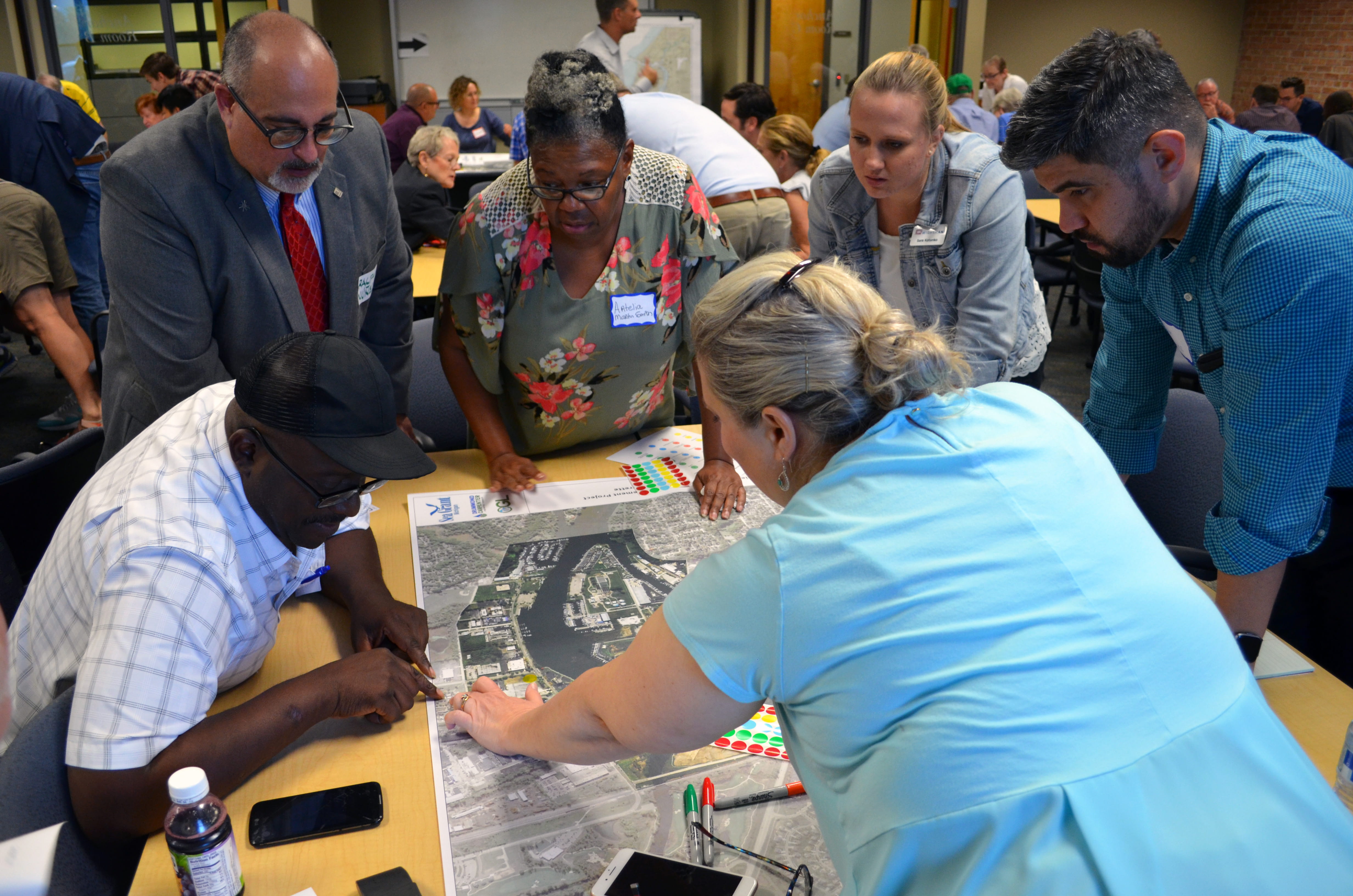
Communities meet challenges on the waterfront
Michigan has more than 80 public harbors and marinas, administered by state, county, and local governments. The impact on the Michigan economy from Great Lakes boating represents billions of dollars a year.

Community members from St. Joseph and Benton Harbor study an area map during an open house to mark assets and areas that need improvements. Courtesy of Michigan Sea Grant.
Even so, with sporadic funding, public facilities face challenges including fluctuating water levels, aging infrastructure, and shifts in the state’s economy. These challenges can leave waterfront communities struggling to adjust.
In response, Michigan Sea Grant and the Michigan Department of the Environment, Great Lakes, and Energy’s Office of the Great Lakes have worked with partners to update their Sustainable Small Harbors Tools and Tactics Guidebook (Guidebook), originally published in 2017, to help waterfront communities in their sustainability efforts.
So, what are the characteristics of a sustainable small harbor? It needs to be accessible to all, economically diverse, and welcoming to visitors and residents. An oversimplification is that a community needs to be a place where people want to live, work, and play. Specifically, the Guidebook covers placemaking, community engagement, resiliency, environmental considerations, and value capture.
A community that provides places where people want to live, work, and play is on its way toward social sustainability, but the process is complicated. Social sustainability requires a common vision for the future of the waterfront through master planning. One crucial component of master planning is to make sure all voices are heard during the process shaping the community’s shared vision, so the Guidebook includes information on how to consider diversity, equity, and inclusion in placemaking efforts.
Regarding environmental sustainability, instead of working against nature through hard or “grey” infrastructure, the goal is to work with nature to provide more resilient infrastructure. This includes engineering using natural systems to reduce the impacts of flooding or shoreline erosion. The Guidebook offers communities ways to improve their resiliency to unprecedented climatic extremes.
Most important to most community leaders is economic sustainability. Consider the economics of a community-owned and/or -operated harbor and adjacent waterfront as the metaphorical center of the community. The waterfront or harbor provides value to residents and visitors alike through quality of life.
Visitors contribute actual value to the community through dollars during their visits spent boating, eating in restaurants, overnight lodgings, and shopping in stores – with many locally owned and operated businesses. Residents contribute value through similar means but also through ownership of houses, cars, and boats. The local businesses and the harbor provide revenues to the municipality through taxes, fees, and direct sales of goods. The final piece of the picture is expenses owed by the municipality for operating and maintaining the harbor and infrastructure. The goal of an economically sustainable harbor is to have revenues exceed expenses.
The web-based Guidebook features tools and tactics and community case studies to assist community leaders and planners with development of a shared vision and a harbor sustainability strategy for their waterfront, including the harbor.
Adapted from an article in the 2023 Michigan State of the Great Lakes Report by Don Carpenter of Drummond Carpenter engineering and research.
EIN Presswire does not exercise editorial control over third-party content provided, uploaded, published, or distributed by users of EIN Presswire. We are a distributor, not a publisher, of 3rd party content. Such content may contain the views, opinions, statements, offers, and other material of the respective users, suppliers, participants, or authors.

